You want to ensure that only one instance of a specific class exists in your PHP project? The Singleton pattern is a proven solution for this. It allows a class to be designed so that it can only create a single instance and is accessible from global scope. In this guide, I will show you how to implement the Singleton pattern in PHP and effectively use it in your projects.
Key Insights
- The Singleton pattern ensures that only one instance of a class is created.
- The instance is accessible via a static method.
- Using the pattern optimizes resource consumption by preventing unnecessary instances from being created.
Step-by-Step Guide to Implementing the Singleton Pattern
To implement the Singleton pattern in PHP, follow these steps:
Step 1: Set Up the Project Structure
First, set up the required project structure. This will allow you to ensure a clean and understandable organization of the file structure. Your project folder should have a structure that includes main files and required subfolders.
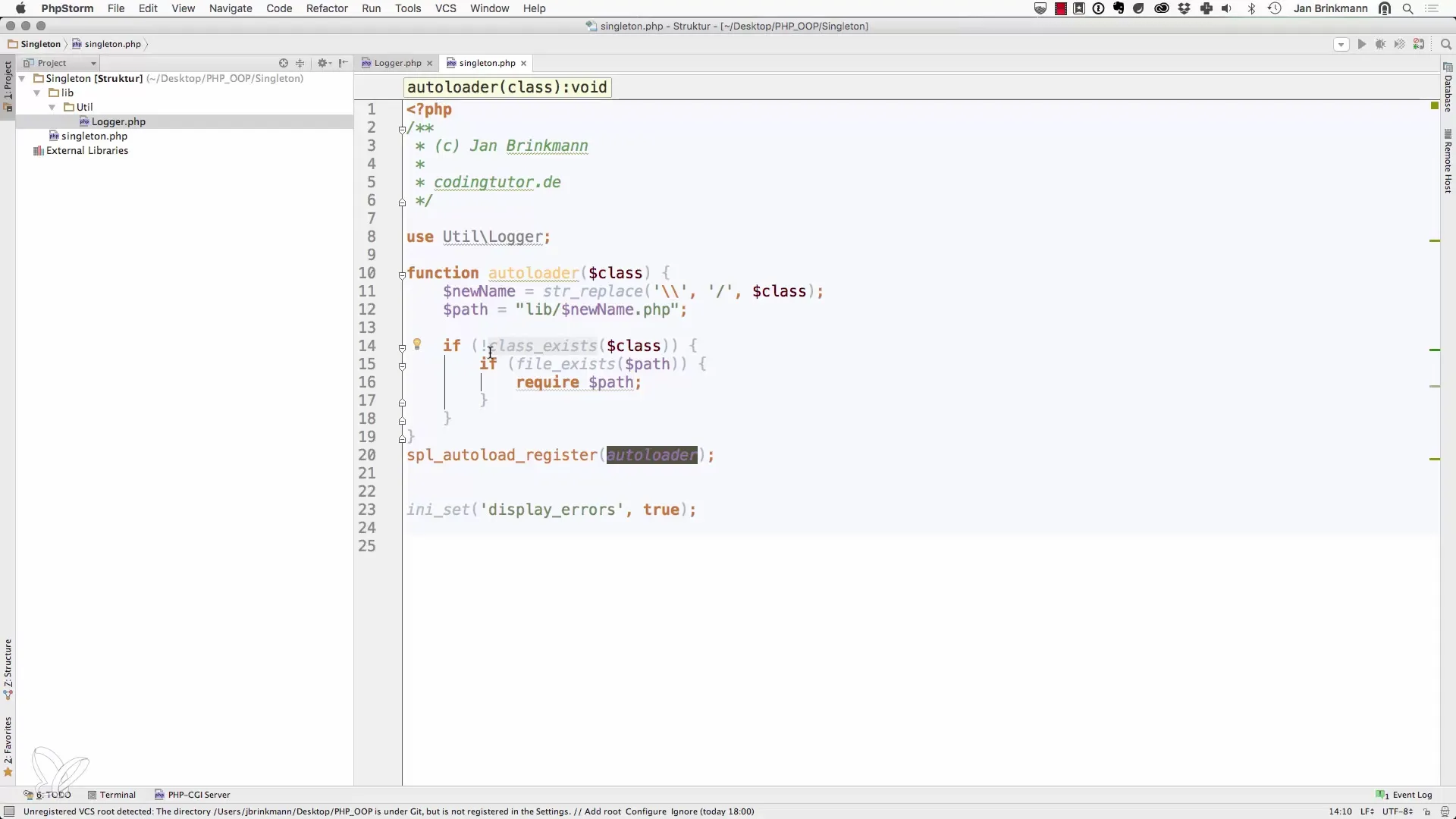
Step 2: Define an Autoloader
To ensure all classes are loaded automatically, implement an autoloader. This autoloader will ensure that the class files are only loaded when needed. In the bootstrap file, include the autoloader, in which classes are loaded on demand if they do not already exist.
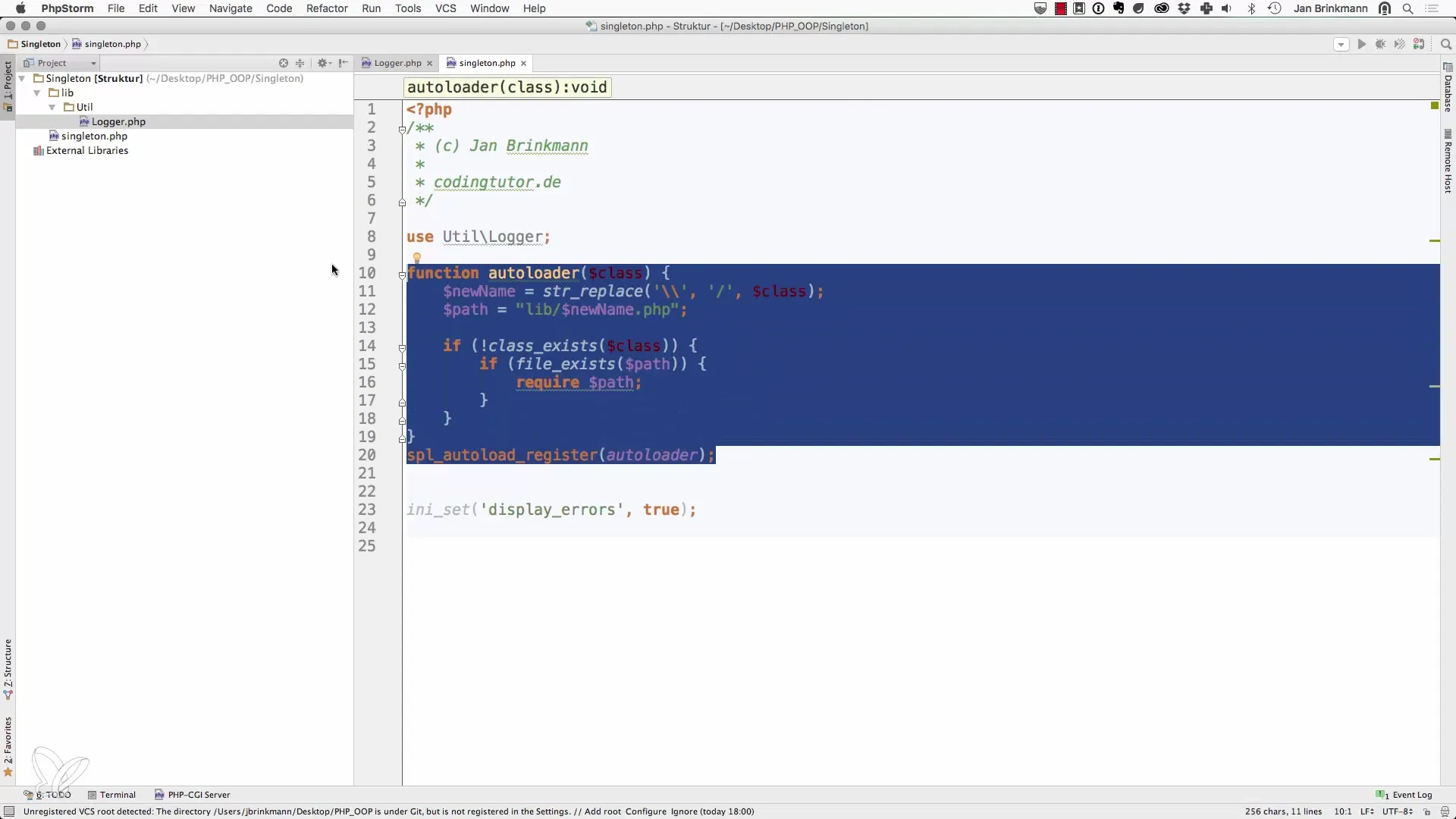
Step 3: Create Logger Class
Now is the time to define the Logger class that will use the Singleton pattern. The Logger class is responsible for logging messages, whether to a file or a database. Traits from this class are important to keep the logging system efficient.
Step 4: Declare Constructor as Private
To prevent new instances of your Logger class from being created from outside, you need to declare the constructor as private. This restricts instance creation to within the class itself.
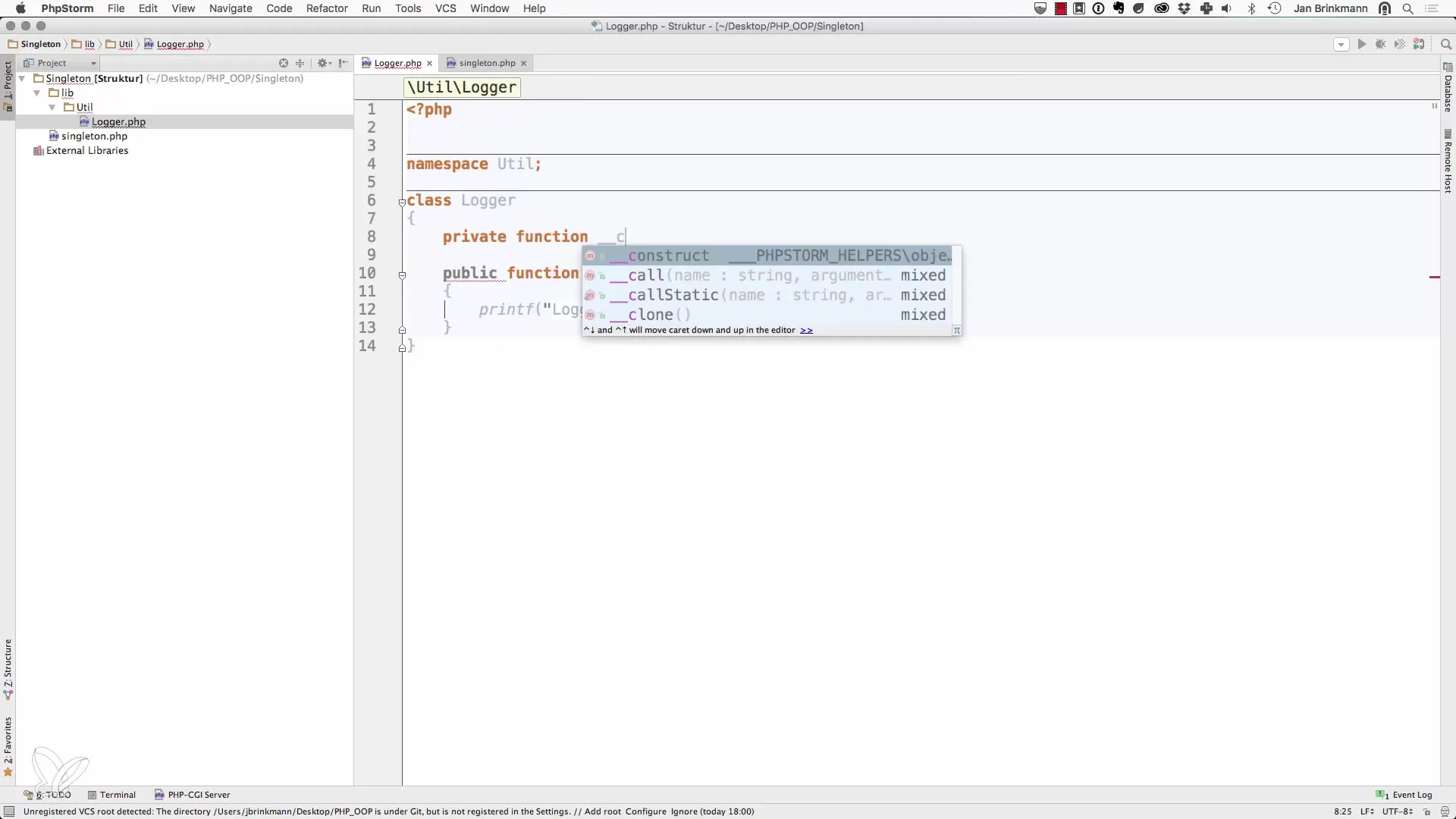
Step 5: Add Static Instance Variable
Add a static instance variable to the Logger class to store the single instance of the class. This variable should initially be set to null. The static nature of the variable allows access without instantiating the class.
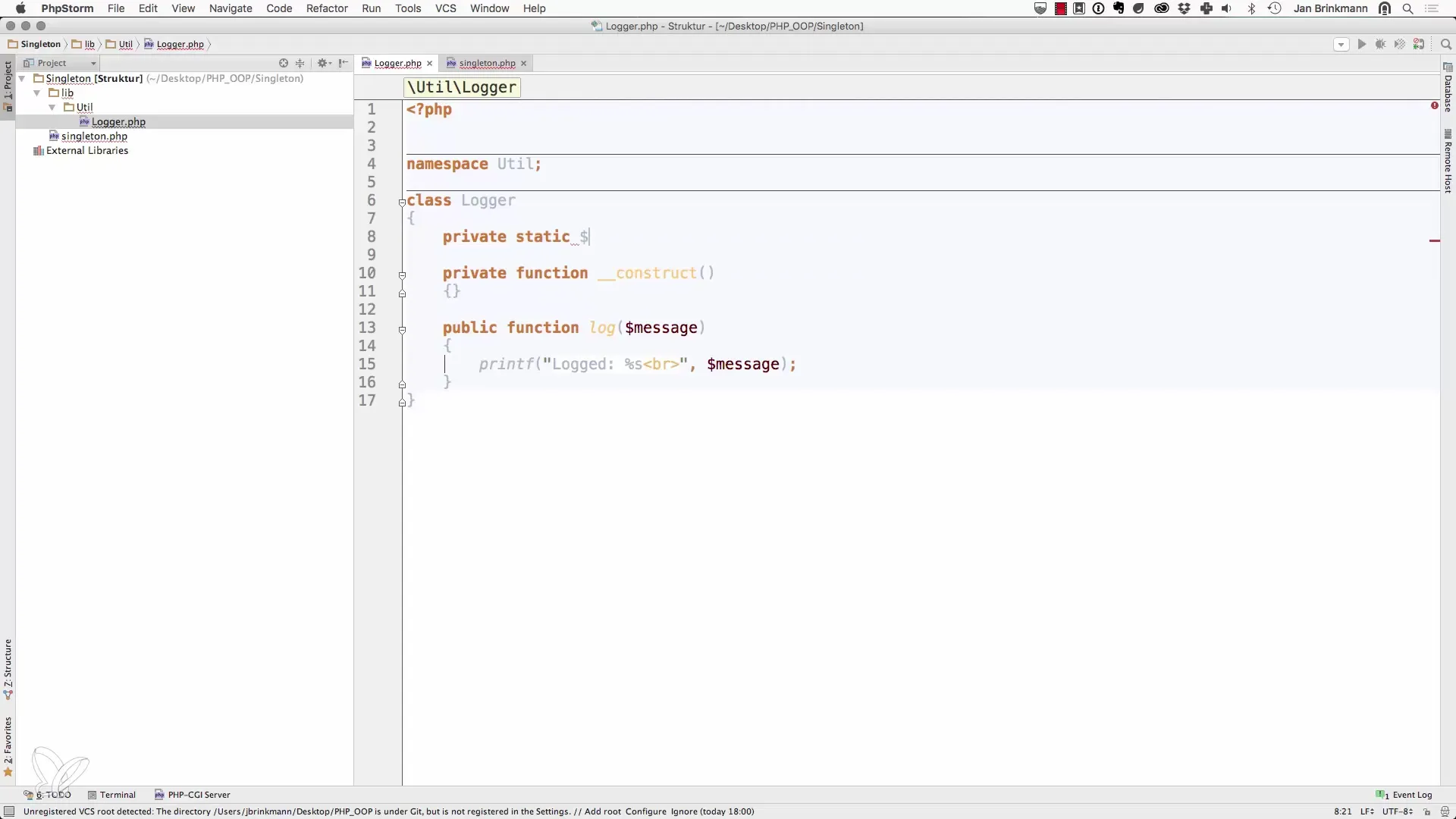
Step 6: Implement the Getter Method
Implement a static method called getInstance that provides the instance of the Logger class. If the instance does not already exist, it will be created within the method. This is done by calling the private constructor, which prevents the creation of another instance.
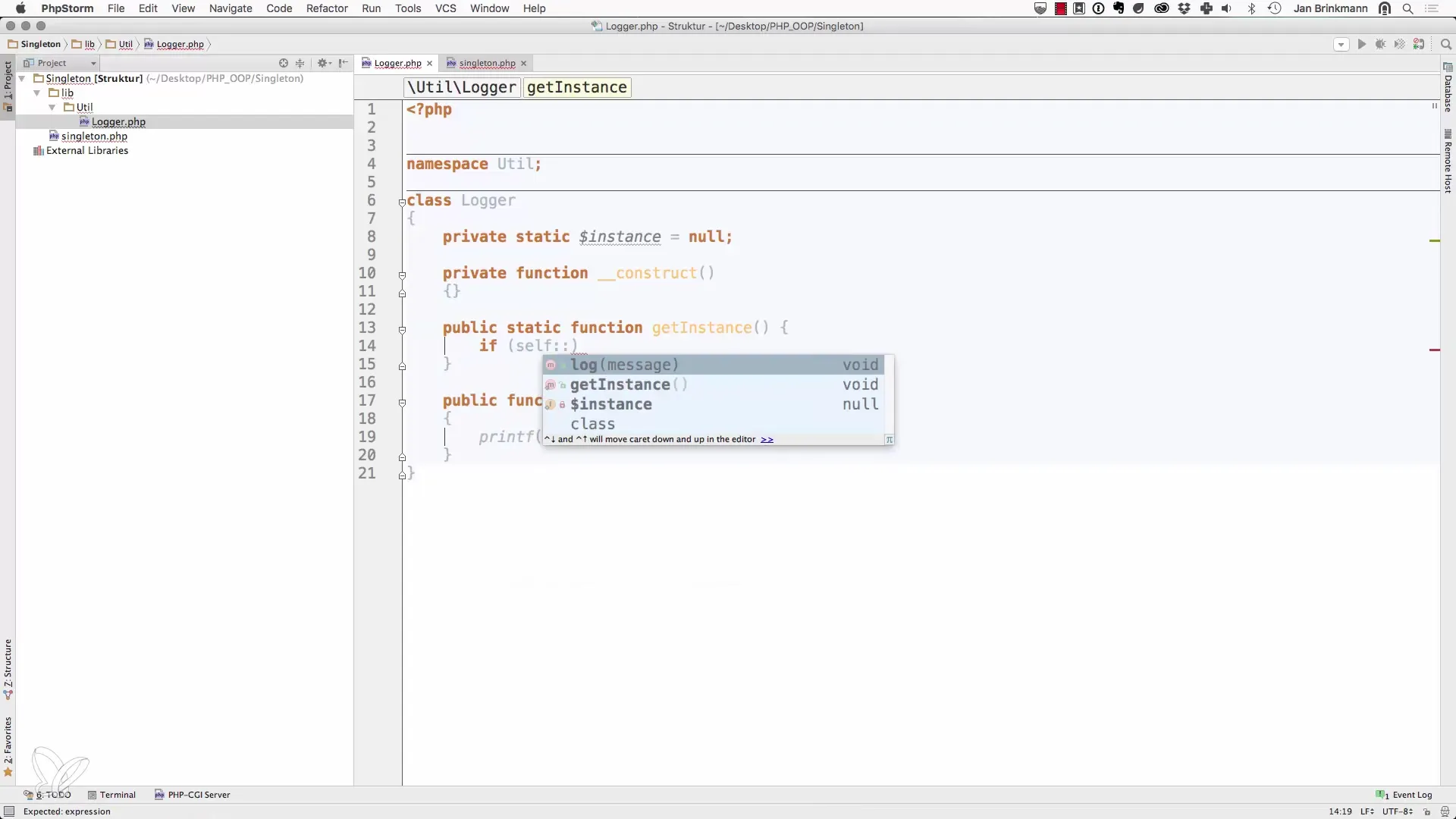
Step 7: Define Logger Method
Now add a method to the Logger class to write log messages. This method processes the messages and can also be customized for formatting, such as line breaks. This will make the log entries more user-friendly.
Step 8: Use the Logger Instance
You can now use your Logger instance anywhere in your project without worrying about multiple instances. Call the getInstance method to retrieve the existing instance and write logs.
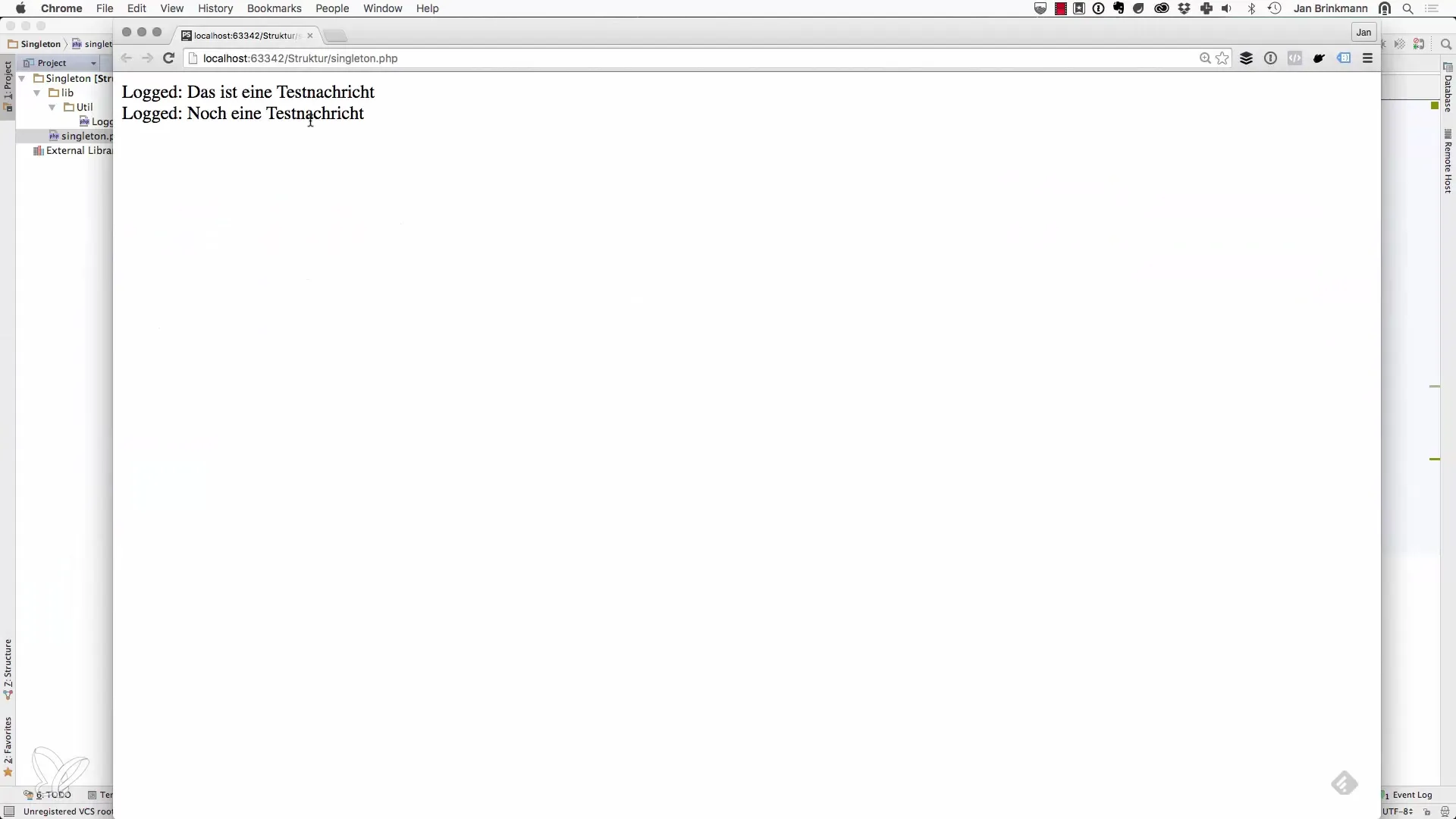
Step 9: Test the Implementation
Check the complete code by displaying some log messages in your browser. Call your script file that uses the logger functionalities. This way, you can verify that everything works as expected.
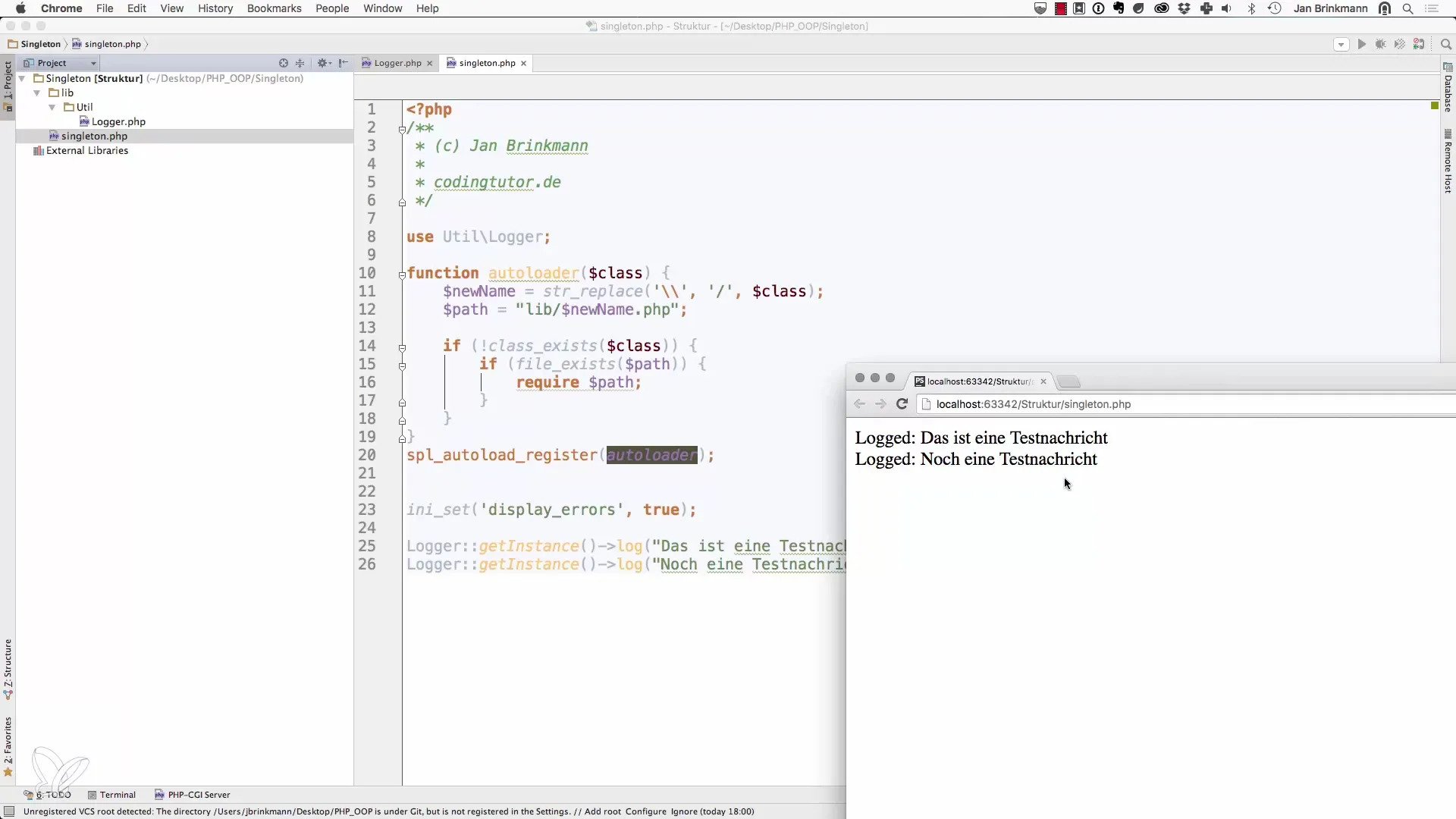
Summary – Effectively Implementing the Singleton Pattern in PHP
The Singleton pattern is a powerful design pattern that helps you guarantee only one instance of a class while optimizing resource consumption in your PHP projects. By ensuring that your logger is instantiated only once, you can avoid unnecessary resource waste. Try it out and integrate this technique into your software development.
Frequently Asked Questions
What is the Singleton Pattern?The Singleton pattern is a design pattern that ensures that only one single instance of a class exists.
Why should I use the Singleton Pattern?The Singleton pattern saves resources by limiting the number of instances of a class to one.
How do I implement the Singleton Pattern in PHP?By declaring the constructor as private, creating a static instance variable, and adding a static getInstance method.
Can I create multiple Logger instances?No, the Singleton pattern ensures that only one instance of the logger is created.
Where is the Singleton Pattern applied?It is commonly used in applications that need a global logging system or must manage a central configuration.


